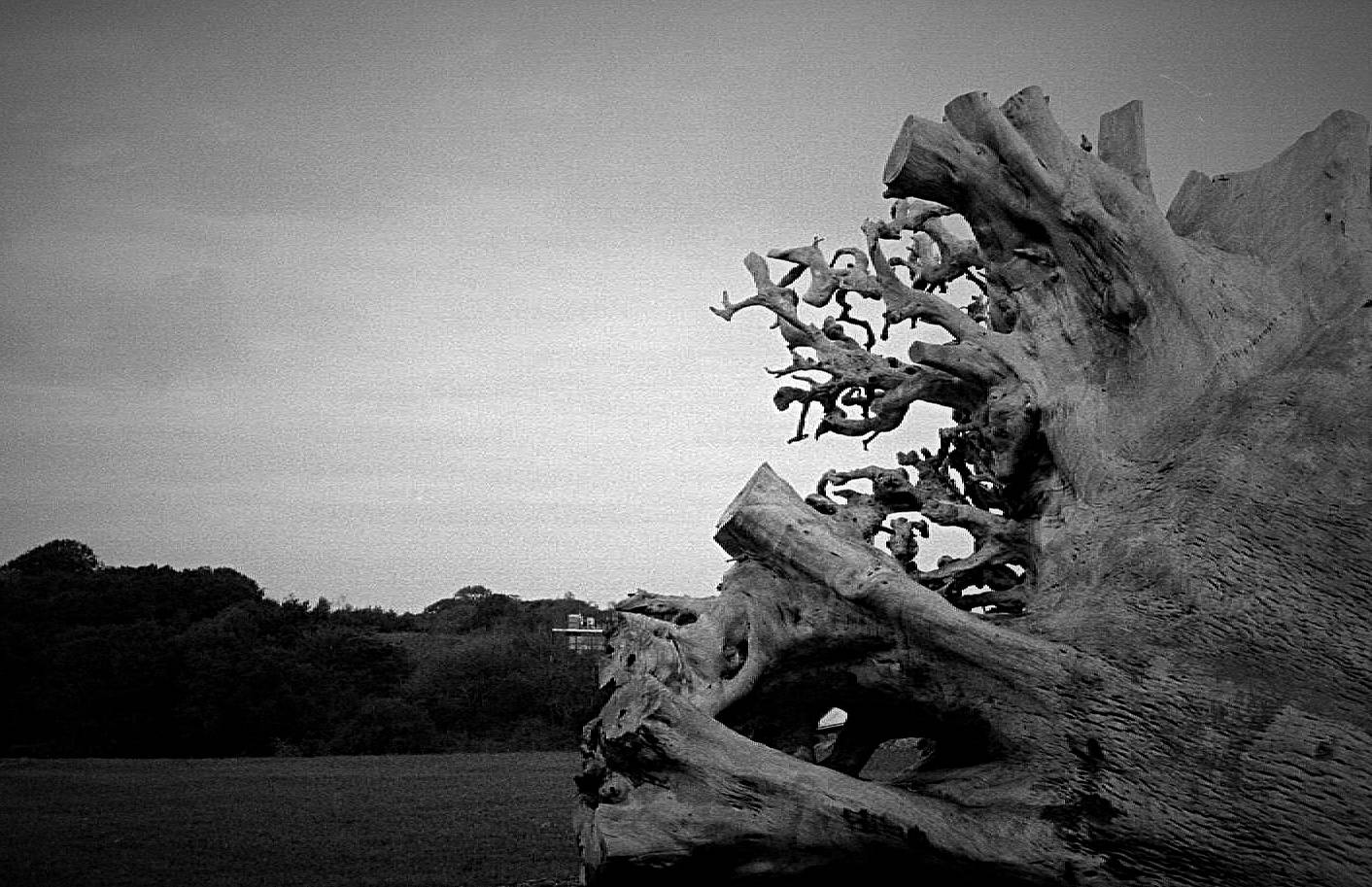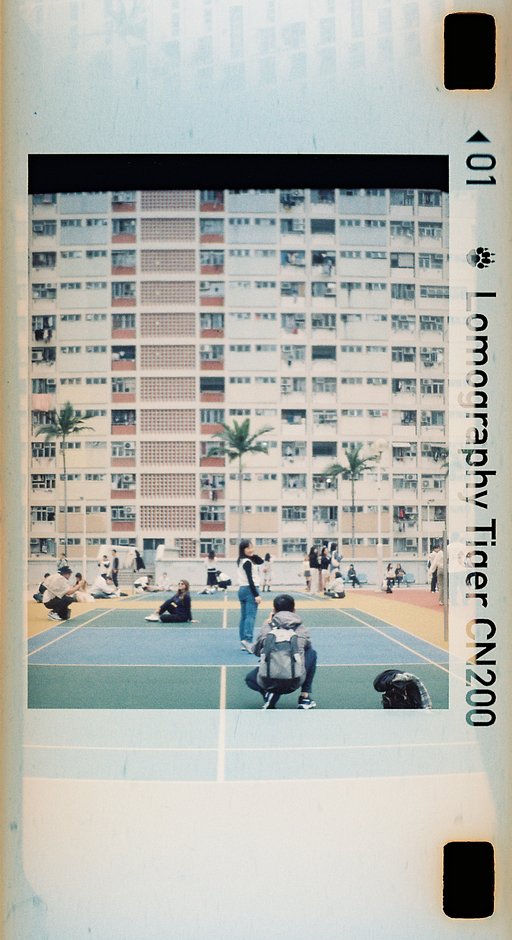The Minimalist Darkroom by Simeon Smith
7 Share TweetIn this series photographer and analogue enthusiast Simeon Smith talks about the use of minimalism in photography and how he applied this method to his own work. In this article he looks at the minimalist darkroom.
All photographs in this article are from the first roll of film I ever developed. "Once the picture is in the box, I'm not all that interested in what happens next. Hunters, after all, aren't cooks." - Henri Cartier- Bresson.
Some of the best photographers I know, have never developed their own film. Maybe some see it as a dark art, maybe others just aren’t interested in acquiring all the gear. I was the latter, a photographer that thought you needed a lot more gear to develop film than you actually do. I thought it’d be hard. I didn’t want to ruin some good shots with bad chemical know-how. But reasons to start developing my own film kept hitting me from different angles. After shooting mainly XP2 (a c41 process black and white film) I wanted to experiment with different kinds of “real” black and white films, and black and white processing in a lab is pretty pricey.
I was starting to feel pretty guilty about the amount of waste my photography produced. It’s bad enough for me, a vegetarian, that film contains gelatin (yup, say thanks to Miss Piggy for that beautiful, push-processed grain). I hoped I could appease my guilt by not buying little glossy boxes filled with disposable plastic. I wanted to buy film in bulk, and load reusable canisters myself. Call me a glutton for punishment, but I was also kind of frustrated that photography could only take up so much of my time. Sometimes I’d want the tactile experience of film when I didn’t have a subject to shoot or ideas for new photos. Developing was a way for me to extend my photography into some quiet evenings at home.
I set about looking at “all-in-one film dev” kits online and was surprised at how much rubbish came with each kit. I’d experimented with making my own redscale film and loading 35mm film into box cameras a few times, so knew that I didn’t need a changing bag. My under-stairs cupboard at night with all the lights out in the house is dark enough. I didn’t understand why I’d need half a dozen measuring devices and storage bottles. The developer I wanted to use is single use, so I could just measure it, and pop it in the tank. Then I could rinse the jug and make up the stop bath while the film developed, and once the stop bath had gone through the tank, I could take as long as I fancied making up fixer. One measuring jug would be fine. After some deliberation about gear I came up with this list to start my minimalist darkroom:
• Paterson daylight dev tank with a reel. Pretty essential.
• Bulk loader. Part of the reason for this experiment was to reduce waste and packaging.
• Reusable film cartridges. The cheap ones with a screw-top. So easy to use. Don’t bother with fancier designs, they’re just more fiddly.
• Measuring glass with a stick-on thermometer glued to the side. Yup, we’re going low-tech here.
• Medicine syringe from an old bottle of Calpol (parents will know what I mean, or just ask a pharmacist and they’ll give you one). For measuring smaller quantities of toxins.
• Bulldog clips. “Borrowed" from the stationary cupboard at work. To hang up the film to dry. These were free, and work every bit as well as film clips.
• Film squeegee. The one luxury on this list. Totally nonessential, but I didn’t want to be messing around with photo flow or rinse-aid, so this gets rid of most of the surface water on film when it comes out of the tank.
• An old lemonade bottle, for saving reusable fixer dilutions. Thanks to my 3 miniature humans for the donation.
• A cheap, but well-researched, 5mp negative scanner. More than good enough for my Instagram shots.
My local lab will usually scan film for me on their posh gear for a few quid if I need better quality, or I can borrow my wife’s posh DSLR to ghetto- scan the odd one or two frames if I need 24 megapixel quality. By the way, I NEVER need 24 megapixel quality. There’s always scissors and tape lying around the house, and my hipster Casio watch has a timer on it, so no need for fancy darkroom timers.
On top of this I bought a 17m roll of Fomapan 400 film, and a pack of chemicals that contained Ilfosol 3 developer, a stop bath (not essential, but it was the same price to buy it with the stop bath as without), and Ilford Rapid Fixer. By shopping around online, all of the gear, scanner, film, and chemistry came to around £105. It’s enough film for at least 10 rolls of 36 exposures, and enough chemistry for double that.
Considering how much I’d have to pay to buy individual rolls of film and develop them at a lab, I’m ALREADY saving money. There are many brilliant tutorials online for how to develop your own film. I don’t feel qualified to add to that, but I will finish with a couple of observations. Firstly, some of you more experienced dev-enthusiasts are probably screaming at your laptops right now, yelling all of the reasons why you might need extra gear, better gear, more stuff to get better development results. Please comment below the piece of gear that you find essential, and why it makes a difference. This is just my suggestion for the bare minimum you could practically use to develop black and white film at your bathroom sink. Secondly, that man or woman in your local film lab? They know stuff. My local film lab guy is called Neil. He knows everything there is to know about film processing, he learnt it all from his father, who knew even more (if that’s possible). Got a project you need the BEST results for? Use your local lab’s
expertise. Want to have fun, reduce waste, lower costs, and experiment with some chemicals? Start your own minimalist darkroom.
To see more of Simeon Smith's work visit his website awonderfulkindofimpossible
2017-02-10 #people #soho #darkroom #london #uk #minimalism #simeon-smith




























No Comments